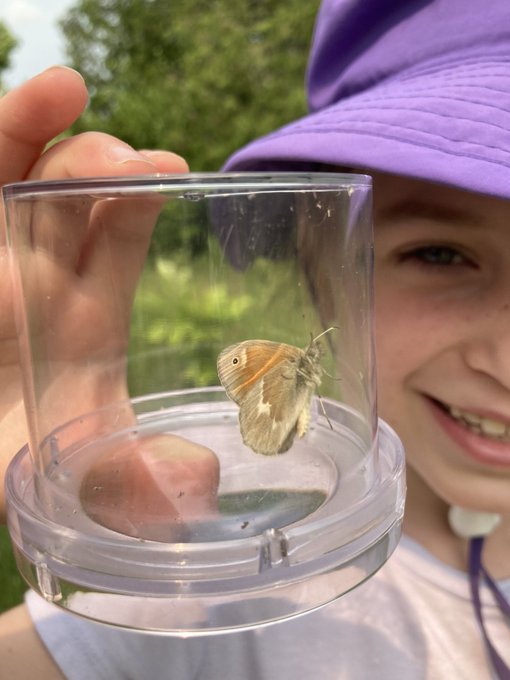Observation of the Week: May 27 – June 2, 2023
Our fourth OOTW for 2023 is this Tiger Swallowtail, seen by Cheryl (@trailpixie).
Cheryl seized the opportunity to take a photo of this butterfly when she spotted it. She says: “I had finished some gardening and was sitting on the patio relaxing when the Swallowtail flew overhead. I quickly grabbed my camera and started following it, snapping pics the whole time, hoping to get a good shot (something I learned to do from the Butterfly blitz training).
It quickly settled on the Lilac bush, and I was able to get a really great picture. I have several plants in our garden to attract butterflies, but each year the Lilac tree seems to attract a Swallowtail early in Spring. It is such a treat to get to observe these beautiful creatures up close.
It’s a tricky time for Tiger Swallowtails in much of our area right now. If you post an observation of one of these big, beautiful butterflies, you might notice comments and disagreements about identification. Many observations will get left with an identification of “Tiger Swallowtails and Allies (Subgenus Pterourus)”.
There are two well-known species of Tiger Swallowtail butterflies in Ontario – the Canadian Tiger Swallowtail and the Eastern Tiger Swallowtail. The Canadian Tiger is the species found in the north of the province, as well as throughout the rest of Canada–all the way up to the Yukon and Northwest Territories. The Eastern Tiger is found in southern Ontario, as well as throughout the eastern U.S. Guess where their ranges overlap? Right here!
Canadian and Eastern Tigers look very similar, but there are some differences. You can read about them here, and here. A few key traits are their overall size, the width of a black line on the hindwing running beside the body, and the black and yellow lines and spots on the outside edge of the forewing. Canadian Tigers are also only around at the start of the summer, whereas Eastern Tigers have two generations and can be seen at both the start and end of the summer.
To complicate matters, Ontario butterfly researchers suspect that there may be a third species in the province. They are tentatively calling this species the Midsummer Tiger Swallowtail, because its peak flight period is in July. The Midsummer Tiger has characteristics that are a mix of the Canadian and Eastern Tigers, but researchers don’t think they are truly hybrids. You can read more about that here.
So, what should you do if you observe a Tiger Swallowtail in the Credit River Watershed in May and June? If it’s in Mississauga, you can be pretty sure it’s an Eastern Tiger. If it’s somewhere around Georgetown or further north, take lots of photos from different angles and do your best to work out it by using the resources above. And don’t worry if someone disagrees with you! Experts on iNaturalist are usually good at sharing their reasons for identification suggestions, like they did on Cheryl’s observation.
Lastly, if you’re wondering if it is even worth adding the observation if you can’t identify it, the answer is yes! Your photos may add important pieces to the ongoing story of Tiger Swallowtails in southern Ontario.

Image: A recent Tiger Swallowtail observation of mine, where I wasn’t sure of the ID at first but did my best.










